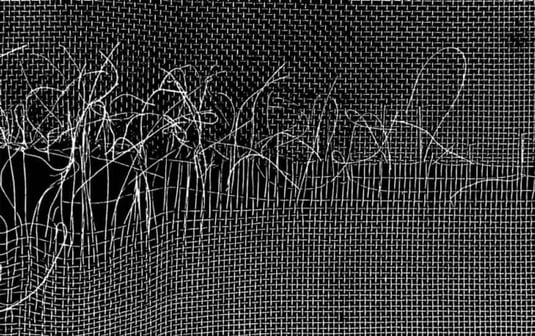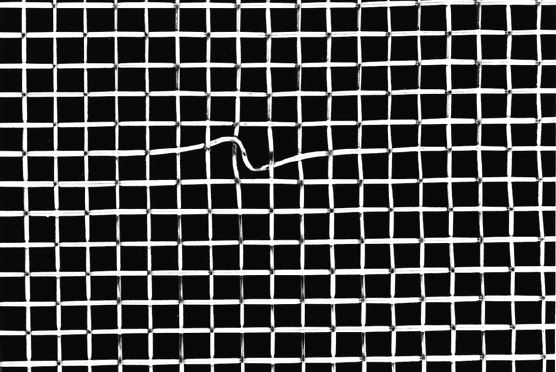Understanding Wire Mesh Blemishes: What To Look For
Woven wire mesh is filter/screening media known for its ability to function in various applications. A heavily monitored weaving process is used to fabricate its iconic profile, resulting in pore openings that precise and rigid.
But as with all manufacturing processes, weaving woven wire mesh has its flaws. While seldom, faults in woven wire mesh, referred to as blemishes, can occur and negatively impact the performance of the mesh.
Having said that, what are the blemishes that occur during the weaving process that you should be looking out for?
W.S. Tyler is a reputable wire mesh supplier that has been weaving wire mesh into everyday life for over 150 years. Our team of experts is here to educate you on the characteristics of quality mesh so you can feel confident in your ability to produce products that you can proudly stand behind.
For that reason, we wrote the following article to highlight the most common wire mesh blemishes you should be mindful of. It will cover the following:
- What a wire mesh blemish is
- The permitted amount of blemishes that wire mesh can have
- The common blemishes that occur when weaving wire mesh
- How wire mesh manufacturers maintain the quality of each weave
What Is a Wire Mesh Blemish?
In the world of woven wire mesh, a blemish is a defect that alters the profile of the apertures or surface quality of woven wire mesh. These defects most commonly occur during the weaving process.

Unless specifically discussed with the user, various standards limit the amount of blemishes to a permissible number in which the wire mesh can still perform.
What Is the Permissible Number of Major Blemishes?
Regardless of how woven wire mesh is woven, blemishes are to be expected. For this reason, the wire mesh manufacturers and the wire mesh buyer must sit down and dictate what appropriate number and degree of blemishes can be accepted.
Now, while the percentage yield of woven wire mesh is specified by the buyer, it will be influenced by the aperture profile of the woven wire mesh roll or piece. The following table will better illustrate the permissible number of major blemishes you can expect:
What Wire Mesh Blemishes Should I Look Out For?
As blemishes are to be expected, it is critical that you understand what blemishes typically occur. This will help you ensure the quality of your mesh falls within the permissible number of major blemishes threshold.
The major blemishes to look out for are smash, burst, broken shot, variation in weft count, draw-over, slack shot, creeper, and reed mark.
- Smash: refers to the major fault throughout the weave pattern
- Burst: refers to variating tears in the wire mesh that forms when the mesh becomes unstable while being tensioned during the weaving process
- Broken Shot: refers to the formation of wide apertures when weft wires are blocked from being laid flat by another that faulted earlier in the weave
- Variation in weft count: refers to an abnormal weft count over the span of a specific length of the woven wire mesh in question
- Draw-over: refers to the absence of weft wires over a specified span of woven wire mesh
- Slack Shot: refers to the occurrence in which a particular weft wire is longer than the weft wires in the surrounding area of the weave
- Creeper: refers to the occurrence in which a particular warp wire is longer than the warp wires in the surrounding area of the weave
- Reed Mark: refers to a line of apertures that feature an extended width in the warp direction
How Is the Quality of Woven Wire Mesh Managed?
As stated above, there are several standards put in place to ensure a certain level of quality assurance is implemented when woven wire mesh is fabricated. Reputable wire mesh suppliers work to implement the latest measuring equipment, each with their own quality assurance standards, to verify the accuracy of the wire mesh they weave.
These state-of-the-art video microscopes, global testing devices, and corrosion check instruments are critical elements of any quality assurance program.
High-quality wire mesh also should be accompanied by historical documentation. This should include material sourcing, chemical tests, damage checks, certifications, corrosion tests, etc.
Find the Perfect Wire Mesh Supplier
As it is not perfect, the weaving process used to fabricate woven wire mesh can sometimes cause blemishes. These blemishes alter the profile of the apertures, ultimately hindering the mesh’s performance.
Naturally, finding a wire mesh supplier with a trustworthy operation of their own will reduce the amount of blemishes you can expect in your mesh. This is why you should what characters to look for when searching for the ideal supplier.
For over 150 years, W.S. Tyler has helped customers weave wire mesh into their operation, learning the way they do things so we can help them navigate the world of wire mesh.
For more information on what the ideal woven wire mesh looks like for you, read the following article:
About Ronnie Brown
Ronnie is the Content Writer for W.S. Tyler and has four years of experience as a professional writer. He strives to expand his knowledge on all things particle analysis and woven wire mesh to leverage his exceptional writing and graphic design skills, creating a one-of-a-kind experience for customers.




